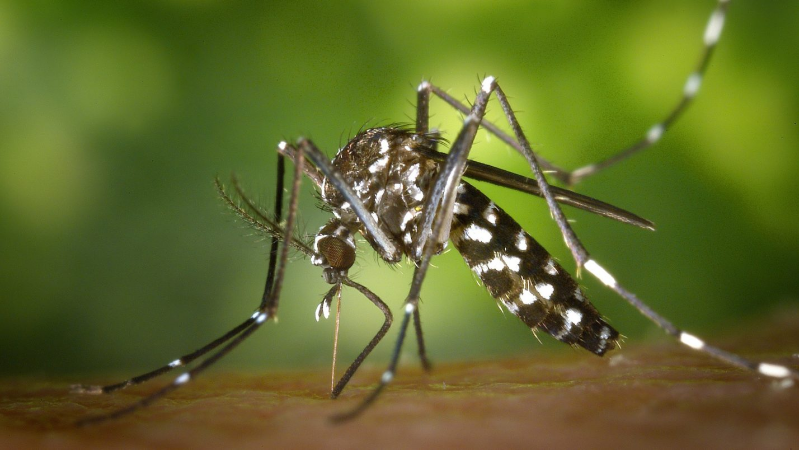
Insect repellents help prevent bites from biting insects only, not to stinging insects. Biting insects include mosquitoes, ticks, fleas, chiggers, and biting flies. Stinging insects include bees, hornets, and wasps. Insect repellents must be used safely and correctly.
DEET (N,N-diethyl- 3-methylbenzamide) is considered the best defense against biting insects. The amount of DEET may range from less than 10% to no more than 30% and lasts between 2-5 hours. The AAP recommends no more than 30% DEET to be used on children, and not recommended under the age of 2 months. It is to be applied to exposed skin (except the face and hands) and also on the clothes. Do not spray on cuts, open wounds, and irritated skin. Spray in areas that are well vented to avoid inhalation. When returning indoor wash the child’s skin off and wash all clothing. Also may wear loose long pants and lightweight long-sleeved shirt, socks, and closed shoes when outside to prevent bites.
Do not use a combination product that contains DEET with sunscreen. Avoid areas that attract flying insects, stagnant pools of water, flowerbeds, or after rainfall. Avoid dressing child in clothing with bright colors or flowery prints as they can attract insects. Do not use scented soaps, lotions, perfumes or hair products. Always check child’s skin at the end of the day.
If using both separate a insect repellant and sunscreen at the same time, always apply insect repellent first and allow to dry, then may apply separate sunscreen overtop.
Allergic reactions may occur due to insect bites or stings in the first hours. This includes immediate redness, swelling and itching. Apply cool compresses to area, may give Claritin or Benadryl to help with swelling and itching. Hydrocortisone cream applied topically to the bite can be used to help with itching. Severe reactions, anaphylaxis, facial, lip or eye swelling, trouble breathing or swallowing should seek immediate emergency care.
Infection may occur, but usually up to 48-72 hours after insect bite or sting. It takes time for the bacteria introduced in the skin from the bite to grow. This includes increased redness or dark red/purple coloration, swelling, tenderness, warmth, fever, and/or drainage. Warm compresses and Epsom salt soaks help. Contact MacKoul Pediatrics for treatment as antibiotics may be needed.
www.Healthychildren.org from the American Academy of Pediatrics
MacKoul Pediatrics is an amazing local pediatrics office in Cape Coral, FL where caring, compassionate doctors and nurses work with you to keep your children as healthy as possible. MacKoul cares for children from birth to college age, from Cape Coral, Fort Myers, Naples, and beyond.
May 12, 2016
